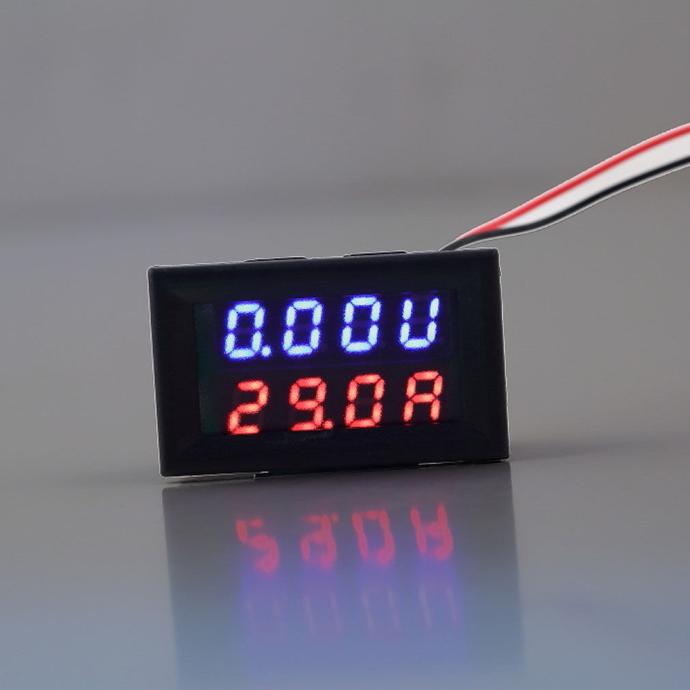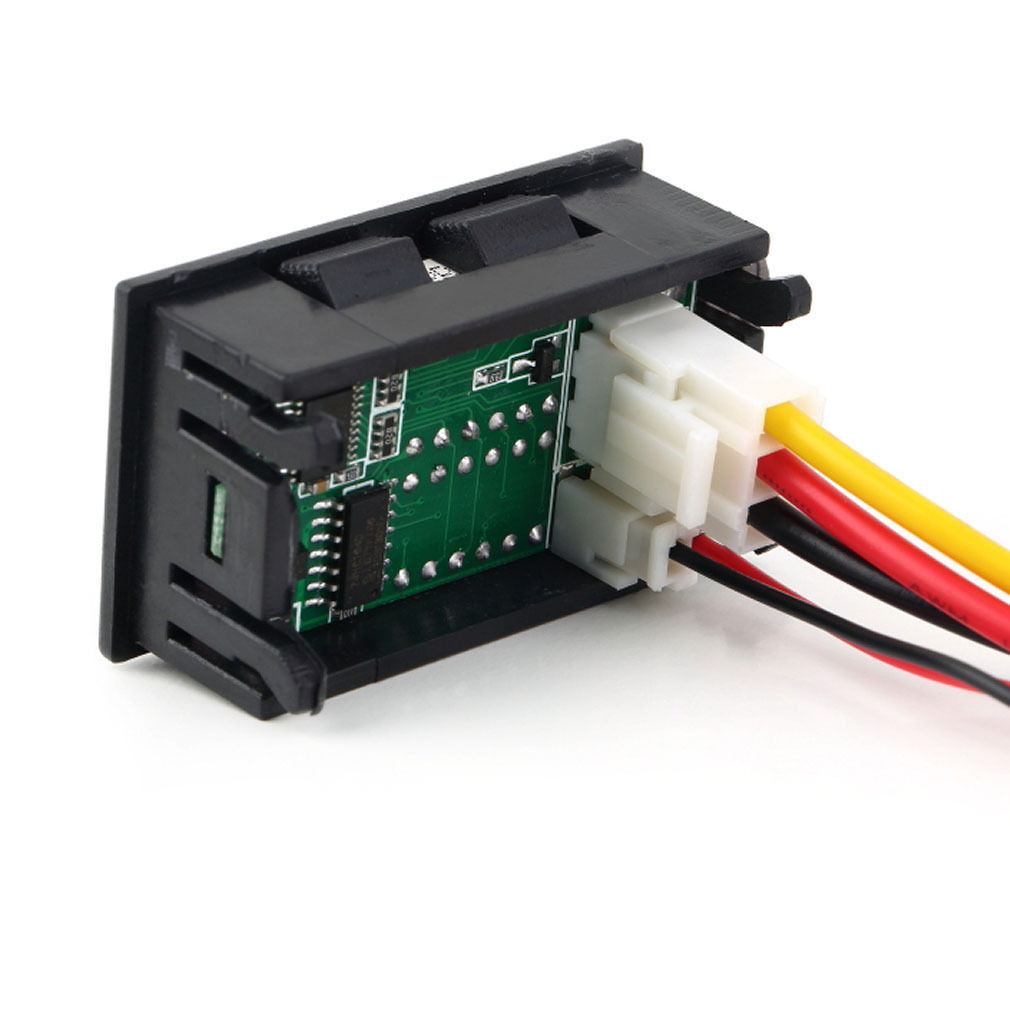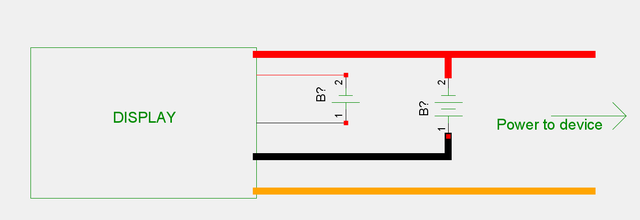I thought the other day I would grab a couple of these cheap little LED
volt & amp meters modules you see on eBay. 30V, 10A, red and blue
LED displays. Funky little things. I felt I should take a look at them
and see just what they are, what they do, how you use them, etc.
Now of course, true to form, the details on eBay are very sketchy about
how to use them. This is all it has to say on the page I bought mine
from about the wiring:

- Red line thin: power supply+
- Black line thin: power supply -
- Red line (thick): PW+, measuring terminal voltage input positive
- Yellow line (thick): IN+, current input
- Black line thick: COM, common measuring
And that is more than most. So at least it gives me a few clues as to what might be what.

So these come with two plugin cables - a two-pin with very thin wires, and a big chunky 3-pin. The two-pin I assumed, quite rightly, to be the power supply "Red line thin" and "Black line thin" from the listing. So far so good. Slap those onto a battery pack and see what happens.
Bingo. We have light.
Just showing all 0 though so far, which is fair enough. Now to try and measure something. Simplest thing is to try and measure the voltage of the batteries it's connected to. According to the list on the eBay sale page "Red line (thick)" is the "measuring terminal voltage input positive". So touch that on the + of the battery pack. Result! 5.57V. Not bad.
Now we need to try and measure some current. So, "Yellow line (thick)" is "IN+, current input". Right. Bit vague. So I try connecting that to the + of the battery as well.
Bad idea. Out go the lights.
So it's not that. Ok - plan B. I was assuming it would be a "high side" current sensor (which would have been very nice) but it seems not. Maybe it's a low-side one then. Let's try connecting the black wire to battery- along with the power's black wire.
Looking better - the lights are still on, still showing 5.57V, and 0.00A. Now for the final test - connect my trusty IKEA LED desk lamp up to the battery + and the yellow wire, see what that does.
Oh look... 0.52A and illumination! By George, I do believe I've got it.
As a side note, my batteries ran out part way through that, and I have had to switch to my bench power supply. That has allowed me to see how accurate it is, of course. And the voltage is within 0.01V of what my power supply is telling me it's giving, which is not bad. The current with nothing connected as a load is 0.023A (23mA) which is pretty acceptable too. And when the lamp is connected the power supply is telling me the whole lot is drawing 0.545A. So with 22mA for the display, subtract that from the 0.545, and you get 0.523A, which is pretty damn close to the 0.52A the display shows if you ask me.
So all in all I am actually pretty impressed by this little unit. Ideal for a quick-and-dirty volt/amp meter to monitor your Arduino's current consumption and supply voltage. And dirt cheap.
So to clarify the wiring for you:
Thin red wire: Display power supply + (4.5 to 30VDC)
Thin black wire: Display power supply -
Thick red wire: Monitored voltage +
Thick black wire: Monitored voltage and current -
Thick Yellow Wire: GND connection to whatever you are powering.

And needless to say, the two batteries can be one battery by linking the red wires together and the black wires together, which nine times out of ten is what you will want.
